Research Highlights
Mekong One Health Innovation Program (MOHIP)
Collaboration Between the U.S. and Mekong Researchers for Strengthening Public Health Safety Systems in Mekong Region.
The overarching purpose of this cooperative agreement project is to improve the health security system in Laos, Thailand and Vietnam of the Mekong region through strengthening of their One Health (human-animal-environment nexus) approach.
The project involves virtual training including a week-long ‘Health Security, One Health and Zoonoses’ course for Mekong researchers and a series of monthly webinars related to health security with a One Health focus. The virtual training and webinars are essential to empower the local researchers and experts and sustain long-term health security system in the region. The project is expected to foster stronger and sustained relationships between US and Mekong researchers and create a vibrant network that they will utilize to carry timely research on health security issues involving One Health approach. Mekong researchers will learn about successfully applying new One Health tools to research health security issues in their region and, apply the findings and resources to devise better health security solutions for the benefit of the whole region. Specifically, the project will fund six research projects for $30,000 each, proposed by Mekong researchers in areas and issues pertinent to their One Health and health security contexts. Empowering the Mekong countries’ human resources of health security and One Health approach is the project priority.
Nanotechnology and COVID-19 rapid diagnoses
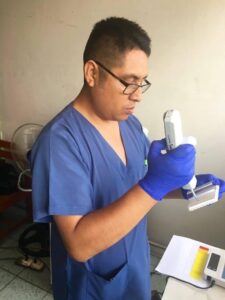 The isolation and identification of a pathogen causative source of a disease is the angular keystone in the management of patients, therefore an increasing number of disciplines in sciences are contributing and making enormous advances especially in nanotechnology.
The isolation and identification of a pathogen causative source of a disease is the angular keystone in the management of patients, therefore an increasing number of disciplines in sciences are contributing and making enormous advances especially in nanotechnology.
A new diagnostic device based on gold nanoparticles is being validated on Peruvian covid 19 patients and can detect in twenty minutes the virus Sar Cov2 in the clinical settings with no extra technology than available at any hospital in the world. That covid test 19 has to be validated and we will include the new variants in a future biosensor. The process of approval is long. It requires multiple research levels, we have initiated with a pilot on the field, then will escalate to a bigger one and so on, until we get a final patented and FDA authorized product.
Read More
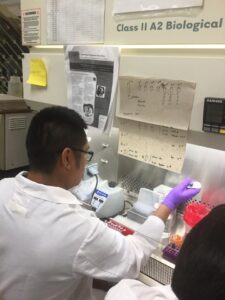 For the past seven years MSUCOM IGH have collaborated with the Biosensors Lab from the Engineering college and her leader Dr Evangeline Alocilja to tackle tuberculosis through early diagnosis and timely treatment of patients using a nanoparticle based biosensing assay in Peru, which can successfully detect Mycobacterium Tuberculosis in sputum samples as accurately as a molecular based diagnostic device “Gen-Xpert” with the cost of less a dime, giving an affordable and scalable powerful tool for developing countries, to fight back the disease.
For the past seven years MSUCOM IGH have collaborated with the Biosensors Lab from the Engineering college and her leader Dr Evangeline Alocilja to tackle tuberculosis through early diagnosis and timely treatment of patients using a nanoparticle based biosensing assay in Peru, which can successfully detect Mycobacterium Tuberculosis in sputum samples as accurately as a molecular based diagnostic device “Gen-Xpert” with the cost of less a dime, giving an affordable and scalable powerful tool for developing countries, to fight back the disease.
Another example of the great value of new technology is reflected on the HPV project being conducted in the Amazon and coastal regions of Peru, where high risk human papillomavirus are genotyped to determine its prevalence among Peruvian women, for early treatment. This test will help physicians to identify the type of HPV and provide accurate treatment to stop the progression of the infection to cervical cancer and death of the patient.
Through the research HPV project, we have established that HPV genotypes prevalence in Peruvian women are slightly different from the ones in other parts of the world. The findings were published in the International Journal of Gynecology Obstetrics on January 2021. More information: Jelinek K, Harding L, Briceno R, et al. Prevalence of high-risk human papillomavirus genotypes in two regions of Peru. Int J Gynecol Obstet. 2021;00:1–6. DOI: https://doi.org/10.1002/ijgo.13625.
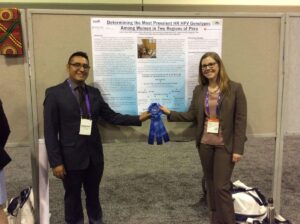
A project lead by Dr Shane Sergent and continued by a multidisciplinary team at IGH using data from years of collection anthropometric pediatric measures is developing point of care technology to develop a phone app to translate a pediatrician well know device “the Broselow tape” adjusted to the Latin American settings. The expectation is that this digital Broselow tape can accurately determine doses and proper drugs for pediatric emergency treatments in Latin American countries.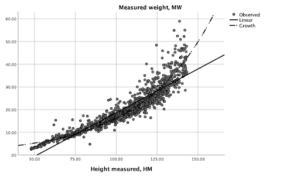
Oommen J Z, Hodgins M, Hinojosa R, et al. (June 21, 2021) Accuracy of Weight Estimation Using the Broselow Tape in a Peruvian Pediatric Population. Cureus 13(6): e15807. DOI 10.7759/cureus.15807
Cerebral Malaria
Internationally recognized expert on malaria and other tropical diseases, University Distinguished Professor Terrie Taylor, D.O.
Dr. Taylor spends six months of the year in the African nation of Malawi, conducting malaria research and treating patients, the vast majority of whom are children. The Blantyre Malaria Project, established by Terrie and Malcolm Molyneux, has carried out outstanding research and patient care in the area of pediatric malaria, specifically cerebral malaria.
Read More
With the help of Dr. James E. Potchen (MSU Department of Radiology) and General Electric Healthcare, the first magnetic resonance imaging unit (MRI) in Malawi was brought to the hospital. The MRI has been invaluable for treating patients and conducting research. She and her team have saved countless lives.
Our interventional clinical trial, “Treating Brain Swelling in Pediatric Cerebral Malaria,” is going well.
We’ve been randomizing cerebral malaria patients with increased brain volume to one of two arms (“usual care” or “immediate ventilatory support”) to date. We have been working closely with the Malawi equivalent of the FDA, the Malawi Pharmacy, Medicine and Poisons Board, to allow an osmotic agent, 3% hypertonic saline, to be imported into Malawi.
Research results
Recent success in the malaria field has shown that prevention works: expanded access to proven, cost-effective prevention tools has significantly reduced the disease’s global burden. The Lancet recently published an article about our research, past present and future (Lancet Publication)
One of Taylor’s current efforts is work on an NIH grant titled, The Intransigence of Malaria in Malawi: Understanding Hidden Reservoirs, Successful Vectors and Prevention Failures, which will enable her research to continue into the future.
Dr. Taylor’s Ted Talk: Unlocking The Mysteries of Cerebral Malaria
Want to learn more about Dr. Taylor’s work? Check her site here.
Would you like to participate in STUDY ABROAD IN MALAWI? Please visit our program page to see details and requirements.
C-sections and low back pain healing through OMM
Long term complications of C-section in the Peruvian Population: Lumbago, Cesarean Incision Scar Pain, and Intervention with OMM.
Title: Releasing the Restriction: A Study of Myofascial Release to Improve Pain and Range of Motion in Post-Cesarean Section Patients in the Peruvian Amazon
Authors and Affiliations: Grace Scott, OMS-II; Dr. Travis Gordon, DO, MHP
Read More
Introduction/Background: The rate of delivery by cesarean section (CS) is globally on the rise at roughly 20%. Peru follows this upward trend at 27%, far from the WHO-recommended 10-15%. As health professionals traveling to and serving in this country, it is important to understand the potential sequelae of CS and how to treat them.
Objective: This quasi experimental design, before-after study seeks to determine the effectiveness of myofascial release to improve low back pain (LBP), incision site pain, scar mobility and lumbar range of motion (ROM) in Peruvian women with a history of CS. We hypothesize that myofascial release will, indeed, improve these 4 parameters.
Methods: Study participants included 33 Peruvian women from the city of Iquitos, Peru who were seen by MSUCOM during their annual medical outreach trip in 2022. Participants were required to be 18 years or older, have a history of one or more CS, and have LBP beginning after CS. After initial measurements, patients underwent 5 minutes of myofascial release to SC incision site. Pain changes in low back and incision site were assessed with 1-10 pain scale. Lumbar ROM changes were assessed by iPhone goniometer application. Scar mobility changes were assessed by use of adheremeter.
Results: This study showed a statistically significant improvement in LBP, incision site pain, scar mobility, and in lumbar flexion ROM (<.001). Only lumbar extension at T12 and S1 improved non-significantly (.245 and .283, respectively). No adverse events were observed.
Discussion/Conclusion: This study provides statistically significant data supporting the use of myofascial release as a means of treating post-CS LBP and related sequelae. This is likely related to anatomic relationships between the abdomen and lumbar spine. More research is needed to further elucidate these results.
Demographic Analysis of COVID-19 Patients in Trujillo, Peru
A survey of patients affected by Covid-19 will be performed by interviewing about 400 persons at two public hospitals covering the area of Trujillo, Peru. The objective of the research project is to understand the socioeconomic characteristics of persons infected, where they live, the household living arrangements and their mobility/transportation conditions in relation to the incidence and risks of viral transmission.
Read More
The study is sponsored by the Institute for Global Health (IGH), College of Osteopathic Medicine at Michigan State University (MSU). It is directed by Dr. Ruben Kenny Briseno, affiliated with IGH and the Hospital Victor Lazarte Echegaray in Trujillo, Peru, assisted by Dr. Rene Hinojosa of IGH. The survey is being given to patients already admitted to Hospital Victor Lazarte Echegaray and Hospital de Alta Complejidad Virgen de la Puerta, Trujillo Peru. The interviewers will conform to all precautions and official regulations regarding the control of the Pandemic in Peru.
The survey instrument is a simple, one-page, questionnaire to be administered to patients who voluntarily agree to participate. Answering the questionnaire should take approximately ten minutes. Only case numbers will be allocated, with no names of other identifiers recorded, and reports will only summarize aggregate results. There are no known risks or costs for participants. If minors are involved, the interviewers will seek parental permission. The data collected will be analyzed statistically by IGH staff. The project is on-going since 2020 and will have collaborators from partner institutions in Peru who will help to statistically analyze the data. The project expects to present a progress report of the first results by the end of 2023.
Wastewater Virology and Outbreak Predictions
It’s common knowledge that coughing or sneezing when sick can spread illness to others, nevertheless humans also shed viruses in our waste, which means the things we flush down our toilets contain clues to what ails us. By collaborating with the Great Lakes Water Authority and Detroit Water & Sewerage Department to collect and analyze samples of metro Detroit wastewater, researchers hope to detect new COVID-19 outbreaks before sick people even realize they’ve been infected.


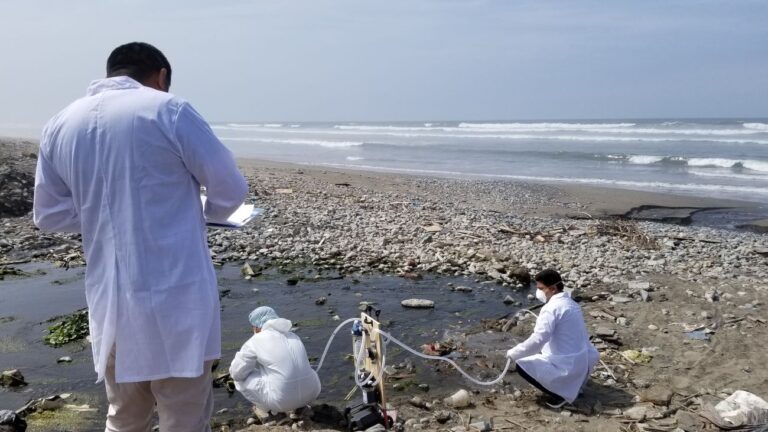
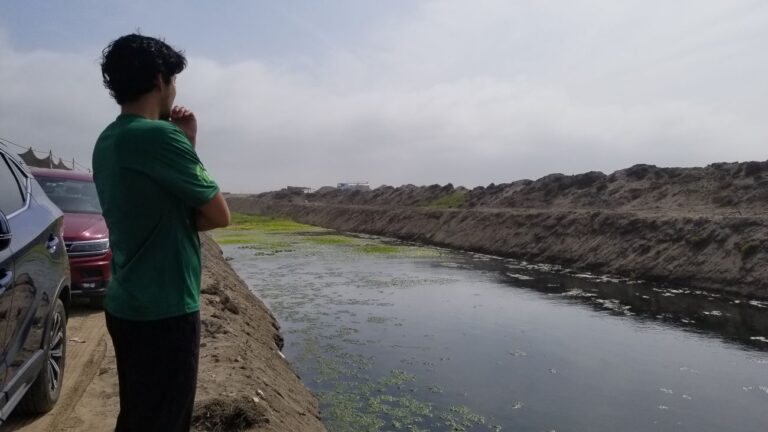
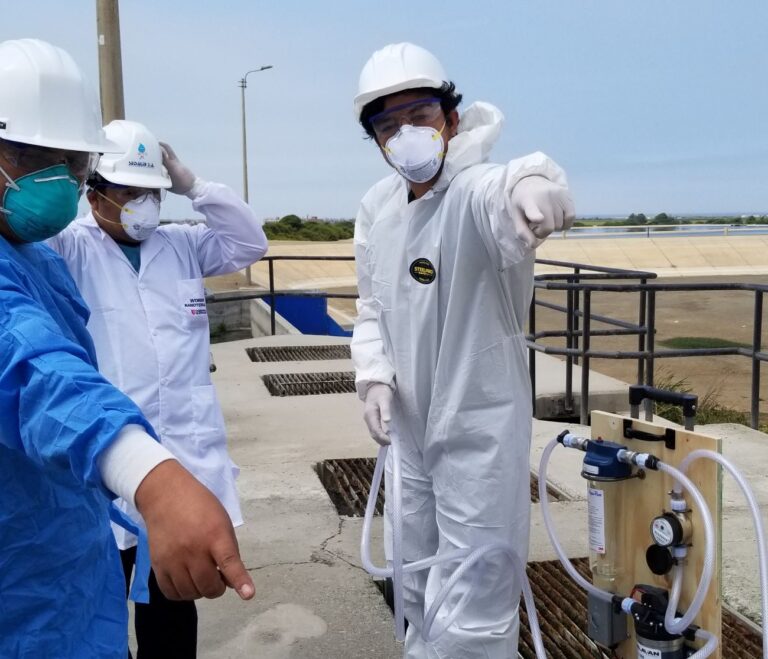

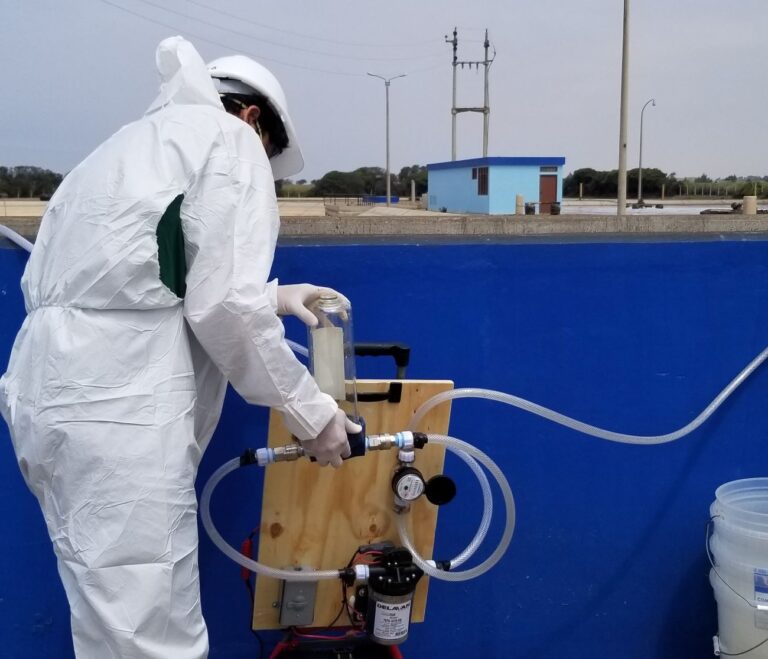
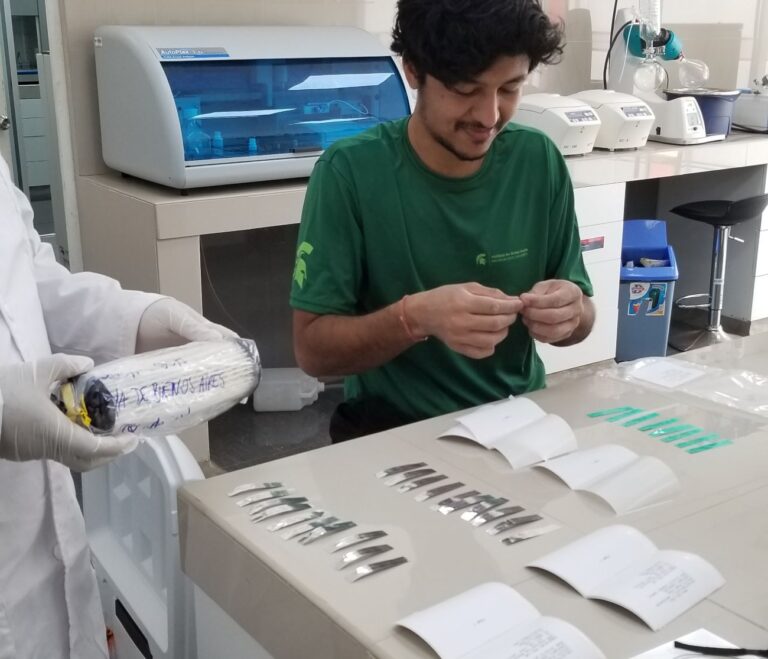
Read More
“If our prediction models are showing early warning signals of a problem, we could sound the alarm for state and federal authorities to prepare for an outbreak,” Irene Xagoraraki, associate professor in environmental engineering at MSU who is leading the study, said in a news release. “The medical community needs to be armed with resources to help these communities and early action might be one of the answers.” The study builds upon Xagoraraki’s, Kaneene, Cunningham Initial work in Uganda (USAUGANDACenter for Viral Disease Surveillance” NSF, Grant approved: 02/11/2020). Most recently Dr. Xagoraraki is researching viruses among Detroit’s population by analyzing past research tracking viruses among Detroit’s population by analyzing the city’s wastewater in 2017 and 2018. During that study, researchers detected a spike in hepatitis A infections seven to nine days before health care facilities noticed the change. Anil Gosine, a program manager with Detroit Water & Sewerage Department, said the COVID-19 wastewater project has the potential to function as a similar early warning system. When a patient contracts COVID-19, it can take as long as two weeks for them to start feeling sick. But infected people begin shedding virus in their saliva, mucus and waste much earlier. “Lots of people have the virus and don’t know they’re spreading it,” Gosine said. “The idea would be, this would give us an indication of where there’s an invisible uptick.” Armed with that information, local public health officials could take measures to prevent further spread, such as advising area residents to limit their face-to-face interaction and ramping up local testing and contact tracing efforts. Hospitals, meanwhile, could brace for a coming surge in patients. If Detroit could have received such a warning before the first Michiganders tested positive for COVID-19, “hundreds if not thousands of lives could have been saved,” said William Cunningham, Associate Dean for global health in the MSU College of Osteopathic Medicine.
Although the effort to apply the MSU team’s research method to the COVID- 19 pandemic is still in its infancy, researchers say it will soon be ready for public health officials. They are collecting samples weekly and working to establish a baseline level of COVID-19 in wastewater, Cunningham said, which will enable them to spot any spikes that indicate a new outbreak. That early detection capability is particularly useful given that Michigan’s COVID-19 testing capabilities remain low. Tracking the virus through widespread testing requires not only the cooperation of residents willing to get tested, but also access to reagents,
swabs and other medical equipment that is in short supply after the pandemic fueled a global spike in demand. The MSU team’s viral forecasting system requires only access to a community’s wastewater and the ability to analyze the samples.
“Say you have 5,000 people in a square mile,” Cunningham said. “Think of the resources it would take to test every one of those 5,000 people and wait for results to come back, versus those 5,000 people are discarding waste into the same sewer, so you analyze aggregate data by running one sample.” Researchers around the globe are using similar methods to track COVID-19, with promising results. Preliminary findings from a study in Massachusetts, for example, showed that COVID-19 volumes in a metropolitan area’s wastewater indicated a far higher infection rate than had been officially reported
in that area at the time. In addition to assisting with Michigan’s COVID- 19 response, Xagoraraki and her team hope their methodology can help detect and contain other infectious disease outbreaks around the globe.
In 2022, Dr. Xagoraraki’s team expanded the project to South America, Peru. Peru was one of the worst-hit countries during the pandemic. In Peru, from January 2020 to December 2022, there have been 4,330,521 confirmed cases of COVID-19 with 217,566 deaths, reported by the World Health Organization (WHO). Moreover, multiple other viral diseases (enteric, respiratory, bloodborne, and vector-borne) are endemic and arising. Arboviruses, such as Dengue virus, have been on a rise in South American countries including Peru1. Other arboviruses like Chikungunya and Zika have also been reported in the region2. According to the Peru Ministry of Health, the COVID-19 pandemic reverted the current health facilities of the country leading to reduced action to curb other diseases like arboviruses. Furthermore, many viral diseases in the area are under-reported and not recognized. Identification, early detection, and prediction of emerging viruses and upcoming viral outbreaks is a key for successful management and containment.
Traditional disease detection systems are based on diagnostic analysis of clinical samples. This approach, however, assumes that patients are examined at a clinical setting after symptoms have developed and after the outbreak has been established and recognized. Recent research efforts in developing optimized detection systems and sensors focus on rapid methods for analyzing blood or saliva samples, but this approach assumes that patients are examined on an individual basis. Testing every individual for active infections or immunity, especially in under served communities, is practically impossible for effective treatment. Traditional systems alone fail to detect early warnings of public health threats at a population level and fail to predict outbreaks in a timely manner.
Environmental based surveillance provides a means of obtaining and analyzing community composite samples (CCS) that can lead to early warnings of potential upcoming viral outbreaks as well as predictions of fluctuations of established outbreaks for specific geographical areas. Wastewater surveillance has been proven effective in predicting viral outbreaks such as COVID-19. The methodology of wastewater-based-epidemiology has been described by our group at Michigan State University. In recent studies in Detroit MI, Dr. Xagoraraki’ s team has been successful in identifying multiple endemic respiratory, enteric, bloodborne and vector-borne diseases extracted by the population. Moreover, we were able to predict surges of COVID-19.
Progress reports of the samples taken in Trujillo, Peru between October 22 and October 24, 2022, reveal the presence of virus and a variety of them depending on the collection site. More results are still to come. If local partners in Trujillo collaborate in the funding of the full-scale project; it is expected to lead to a joint publication with co-authors from UCV and Michigan State University. The journal publication will demonstrate technical capability of the group, evidence of established collaboration, and potential of laboratory training for technology transfer. These aspects are critical for a subsequent large research grant to be requested from other institutions.
